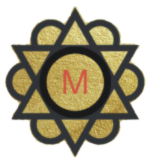
The purpose of a tarot spread is multifaceted, serving as a tool for introspection, guidance, and clarity. At its core, a tarot spread is designed to facilitate a deeper understanding of one’s current situation, emotions, and potential future outcomes. Each card drawn in a spread represents not just a singular aspect of the querent’s life but also interacts with other cards to create a narrative that can illuminate hidden truths or provide direction.
This narrative is shaped by the questions posed and the intentions set prior to the reading, making it essential to approach the tarot with a clear mindset. When embarking on a tarot reading, it is crucial to define what you hope to achieve. Are you seeking answers about a specific relationship, career path, or personal challenge?
The clarity of your intention will guide the reading and influence how you interpret the cards. For instance, if your focus is on career decisions, you might be looking for insights into your strengths, potential obstacles, or the overall trajectory of your professional life. By understanding the purpose behind your spread, you can engage more meaningfully with the cards and extract insights that resonate with your current circumstances.
Key Takeaways
- The purpose of your tarot spread is to gain insight and clarity into a specific situation or question.
- Identify the key elements and questions related to your situation to focus your tarot spread on the most relevant areas.
- Select tarot cards that resonate with the energy of your situation and questions, and trust your intuition in the process.
- Create a layout and structure for your tarot spread that allows for a clear and organized interpretation of the cards.
- Interpret the cards in your spread by considering their individual meanings as well as their placement in the spread as a whole.
- Refine and adjust your tarot spread as needed to ensure clarity and insight, and trust in the process of fine-tuning your spread for the best results.
Identifying the Key Elements and Questions for Your Situation
Reflecting on Your Experience
Consider the emotional, mental, and physical dimensions of your experience. For instance, if you are grappling with a decision about a romantic relationship, think about your feelings, the dynamics at play, and any external factors influencing your choices.
Crafting Precise Questions
Crafting precise questions is an art in itself. Open-ended questions often yield richer insights than those that can be answered with a simple “yes” or “no.” Instead of asking, “Will I get the job?” consider rephrasing it to “What do I need to know about my chances of getting this job?
Enhancing the Effectiveness of Your Tarot Spread
Additionally, it can be beneficial to prioritize your questions; focus on what feels most pressing or significant at the moment. By honing in on these key elements and questions, you create a framework that enhances the effectiveness of your tarot spread.
Selecting the Tarot Cards for Your Spread

The selection of tarot cards is a pivotal moment in any reading, as each card carries its own symbolism and meaning. Depending on the type of spread you are using—whether it’s a traditional Celtic Cross or a more personalized layout—the number of cards and their positions will vary. When selecting cards, you may choose to shuffle the deck while concentrating on your questions or allow cards to fall out naturally during shuffling.
This intuitive process can often lead to surprising revelations that align with your inquiry. Each card drawn should be considered in relation to its position within the spread. For instance, in a three-card spread representing past, present, and future, the first card may reveal influences from your past that shape your current situation, while the last card offers insight into potential outcomes based on your current trajectory.
It’s important to familiarize yourself with the meanings of each card in your deck; however, personal intuition plays an equally significant role in interpretation. The imagery and symbolism of each card can evoke different feelings and insights depending on your unique context, making this selection process both an analytical and intuitive endeavor.
Creating the Layout and Structure of Your Tarot Spread
The layout and structure of your tarot spread are essential components that dictate how you will interpret the cards. Different spreads serve various purposes; for example, a simple three-card spread can provide quick insights into past, present, and future dynamics, while more complex spreads like the Celtic Cross can delve into deeper layers of meaning and context. When creating your layout, consider how many cards you wish to use and what each position will represent.
This clarity will help you maintain focus during the reading. Once you have determined the structure of your spread, it’s time to physically arrange the cards in a way that feels meaningful to you. Some practitioners prefer to lay cards out in a linear fashion, while others may opt for circular or more abstract arrangements.
The physical space where you conduct your reading can also influence the energy of the session; creating a calm and sacred environment can enhance your connection to the cards. As you place each card down, take a moment to reflect on its significance within the context of your questions and overall layout. This intentionality fosters a deeper connection with both the cards and your own intuition.
Interpreting the Cards in Your Spread
Interpreting the cards in your tarot spread is where the magic truly happens. Each card carries its own set of meanings based on traditional interpretations as well as personal associations. As you begin to analyze each card in relation to its position within the spread, consider both its upright and reversed meanings if applicable.
For example, The Lovers card may signify harmony and partnership when upright but could indicate disharmony or difficult choices when reversed. This duality adds depth to your interpretation and allows for a more nuanced understanding of your situation. It’s also important to consider how the cards interact with one another.
The relationships between cards can reveal patterns or themes that may not be immediately apparent when looking at them individually. For instance, if one card suggests conflict while another indicates resolution, this juxtaposition can provide insight into how challenges may be overcome or what steps need to be taken for healing. Engaging with the imagery and symbolism of each card can further enrich your interpretation; often, intuitive insights will arise as you meditate on what each card evokes for you personally.
Refining and Adjusting Your Tarot Spread for Clarity and Insight

After interpreting your initial spread, it may become apparent that certain aspects require further exploration or clarification. This is where refining and adjusting your tarot spread can enhance its effectiveness. If specific cards seem unclear or contradictory, consider drawing additional cards for clarification or even reshuffling parts of the spread to gain new perspectives.
This iterative process allows for deeper insights to emerge as you engage more fully with the cards. Additionally, reflecting on your emotional responses during the reading can provide valuable information about how certain interpretations resonate with you. If a particular card evokes strong feelings—whether positive or negative—this emotional response can guide you toward areas that may need further attention or healing.
You might also find it helpful to journal about your reading afterward; writing down your thoughts can solidify insights gained during the session and serve as a reference for future readings. By remaining open to adjustments and refinements in your tarot practice, you cultivate an ongoing dialogue with both the cards and yourself, fostering personal growth and understanding over time.
If you are interested in exploring the deeper meanings behind tarot cards, you may want to check out The Meaning and Symbolism of the Tarot Card Wheel of Fortune. This article delves into the significance of this powerful card and how it can guide you through times of change and uncertainty. By understanding the symbolism behind each card, you can enhance your tarot readings and gain valuable insights into your own life path.
FAQs
What is a tarot spread?
A tarot spread is a specific arrangement of tarot cards used for a reading. Each position in the spread represents a different aspect of the question or situation being explored.
How can I create my own tarot spread?
To create your own tarot spread, start by identifying the specific situation or question you want to explore. Then, determine the number of cards you want to use and the positions they will occupy in the spread. Finally, write down the meanings or interpretations for each position in relation to the situation or question.
What are some common tarot spread layouts?
Some common tarot spread layouts include the Celtic Cross, the Three-Card Spread, the Five-Card Spread, and the Horseshoe Spread. However, you can also create your own unique spread tailored to your specific needs.
Can I use any tarot deck to create my own spread?
Yes, you can use any tarot deck to create your own spread. Whether you have a traditional Rider-Waite deck or a more modern deck, the process of creating a spread remains the same.
Are there any rules or guidelines for creating a tarot spread?
There are no strict rules for creating a tarot spread, but it’s important to ensure that the positions in the spread are relevant to the situation or question at hand. Additionally, it’s helpful to have a clear and specific focus for the spread to provide meaningful insights.






